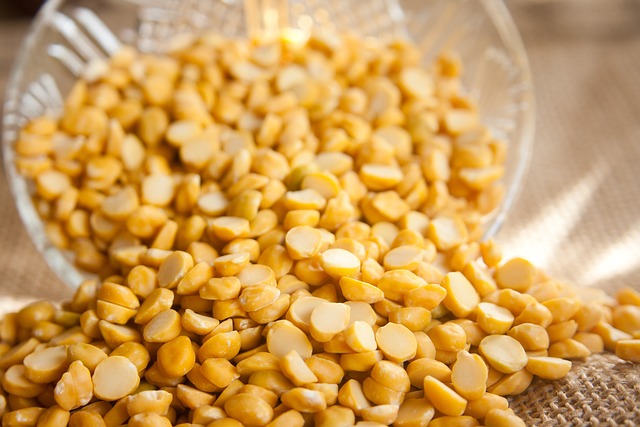Data from this recent study shows that between 1990 and 2018 diet quality has only improved marginally.
This may come as a surprise given the advancement in technology, better farming techniques, better transportation and storage facilities and improved ways of retaining nutrition.
The authors of the study impress on the need for coordinated global efforts to better the quality of a diet through collaborative processes with various food systems and policies to drive balance diets
Diet and Non-Communicable Disease
According to the Global Burden of Disease Study tracking trends in consumption of 15 dietary factors from 1990 to 2017 in 195 countries, published in the Lancet, people across the world from almost every region could benefit from redesigning their diets with optimal amounts of nutrients and various food groups.
- Studies show that poor diets are to blame for approximately 26% of preventable mortality across the world.
- A Lancet report in 2019 reported that one in five deaths worldwide are associated with poor diet. This is almost 11 million deaths because of poor diet.
Undernutrition, that is eating too little food, has been a major concern for low-income countries for a long time now. Over the last 25 years, however, the burden of disease in low-income countries has shifted to include NCDs, which are diseases of eating too many calories - overnutrition. Unhealthy diets combined with sedentary lifestyle has doubled the risk of non communicable diseases in these countries.
The food we eat contributes more than any other factor to non-communicable diseases (NCDs) such as cardiovascular disease, diabetes, hypertension and certain types of cancer.
Different components of a diet contribute to increasing risk of these conditions. Broadly speaking, diets low in nutritious food like fruits and vegetables, combined with diets high in sodium, sugar, red meat, processed meat are contributing to higher risk of these diseases.
Diets Have Only Become Marginally Healthier in 30 Years
Researchers in a study that appears in Nature Food, compiled data from 1248 diet surveys from 188 countries and obtained data on individual dietary intake for 53 foods drinks and nutrients.
Using the Alternative Healthy Eating Index (AHEI) to define a healthy diet the researchers put quality of diet on a scale of 0- 100, with 0 being poor and 100 being optimal.
Research has shown that between 1990 and 2018 the average global AHEI only increased by 1.6 percent from 39.2 to 40.0.
It was also found that less than 1% of the world's population score 50 or above. India is one of these countries, thanks to our consumption of fruits, vegetables, whole grains, legumes, etc.
Data Analysis of the Global Burden of Disease Study
The GBD study published in the Lancet, looked at the consumption of major foods and nutrients across 195 countries between the years 1990 and 2017. The study also quantified the outcome of poor diets on death and disease from lifestyle diseases like cardiovascular disease, diabetes, and cancers.
In earlier studies the health effect of poor diets at the population level have been difficult to study because of various complexities. This study has combined and analysed data from epidemiological studies, where long-term randomised studies were not available or feasible, to help identify association between poor diet and disease.
The study looked at 15 dietary elements.
Diets low in
- Fruits
- Vegetables
- Legumes
- Whole grains
- Nuts and seeds
- Milk
- Fibre
- Calcium
- Seafood Omega 3 fatty acids
- Poly saturated fats
Diets high in
- Red meat
- Processed meat
- Sugar sweetened beverages
- Trans fatty acids
- Sodium
Overall in 2017 the study found that an estimated 11 million deaths were because of poor diets.
- Diets high in sodium
- Low in whole grains &
- Low in fruits
Together accounted for over 50% of all diet related deaths world over in 2017.
- 10 million of these deaths were from cardiovascular disease
- 913 000 cancer deaths
- 339000 deaths were from type 2 diabetes
The study found that on average across the world people ate only 12% of the recommended amount of nuts and seeds (around 3 grams compared with the recommended 21 grams) and rank around 10 times recommended amount of sugar sweetened beverages (49 grams compared with 3 grams recommended)
"This study affirms what many have thought for several years -- that poor diet is responsible for more deaths than any other risk factor in the world," says study author Dr. Christopher Murray, Director of the Institute for Health Metrics and Evaluation, University of Washington, USA. "While sodium, sugar, and fat have been the focus of policy debates over the past two decades, our assessment suggests the leading dietary risk factors are high intake of sodium, or low intake of healthy foods, such as whole grains, fruit, nuts and seeds, and vegetables. The paper also highlights the need for comprehensive interventions to promote the production, distribution, and consumption of healthy foods across all nations."
Diet Improvements in India
In India today heart disease is the leading cause of death. This disease affects 5.5 crore people and diabetes, around 6.5 crore people.
According to a study, India suffers from the dual burden of persistent under nutrition and an emerging and growing issue of overnutrition. Clinicians and epidemiologists have shown that both under and overnutrition occur in the same family, the same individuals at different periods of life or even at the same time.
- Over the last 5 decades that has been a slow and steady decline an undernutrition rates with poverty and lack of food not being the major challenge.
- There is also increasing awareness among people and better access to health and nutrition which is further accelerating the decline in undernutrition.
- Overnutrition rates are relatively low compared to the vast and varied population of India.
- It is a problem currently faced by the urban rich.
- A diet rich in animal and highly process foods combined with low physical activity has led to a higher risk of non communicable diseases in this segment of population.
The Way Ahead For India
Over the last many decades, people in India have better access to food pulling us out of malnutrition, the quality of food that a majority of Indians are eating today comes into question.
With the proliferation of processed foods, Indians may be heading down the same path as the west - a diet high and calories but low in micronutrients & fibre. Again increasing our risk of chronic lifestyle diseases.
According to the Global Burden of Disease Study
- Dietary risk is the number one risk factor that accounts for the most disease burden in India.
- High blood pressure, high body mass index, high total cholesterol also feature in the top 15 leading risk factors for disease burden in India - these are also diet induced conditions.
India with its rapid growth can significantly redesign policies to prevent health crises by learning from the mistakes of countries suffering the consequences of over nutrition. Awareness among individuals, subsidies for fruit, vegetables. legumes and whole grains and education about the harmful effects of processed foods can go a long way.
Next Steps - Get Started Today
If you or someone you know has been diagnosed with a chronic lifestyle disease, we may be able to help
1. Book an online consultation with Dr. Achyuthan Eswar to start reversing your lifestyle diseases through lifestyle changes at home
2. Subscribe to our 100% whole food plant based balanced meal plan, delicious & doctor designed to help you get all your macro and micro nutrients, from the comfort of your home - Bengaluru only
3. Stock up on delicious sweets and snacks that are sugar/jaggery-free, oil-free, maida-free and plant-based - Available Pan-India
4. Learn more about a whole food plant based diet on NutritionScience.in online courses and get started on your journey to a healthier tomorrow
5. Sign up for our Plant Based Diet Masterclass on NutritionScience.in and take a deep dive into a whole food plant based diet and how it affects your health





